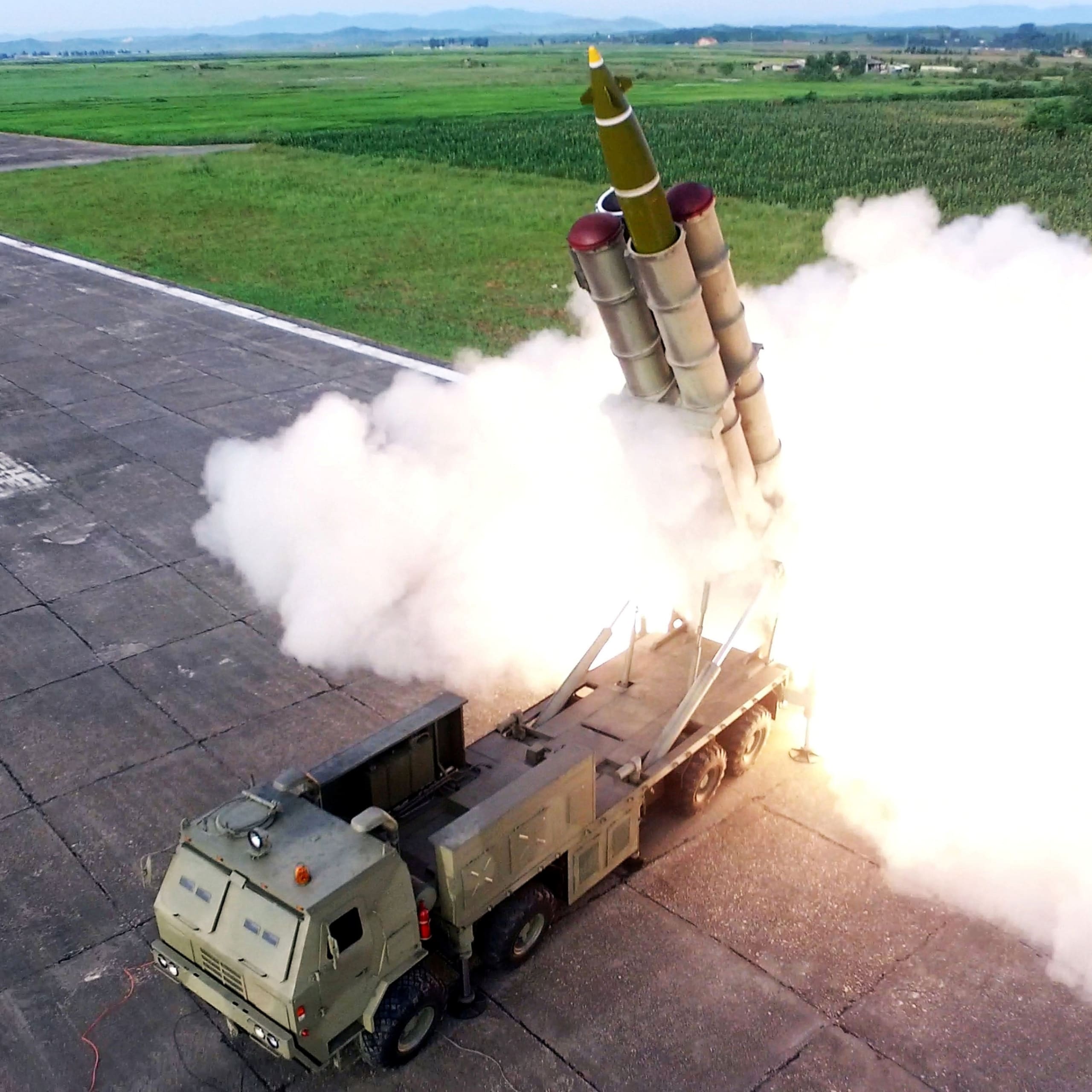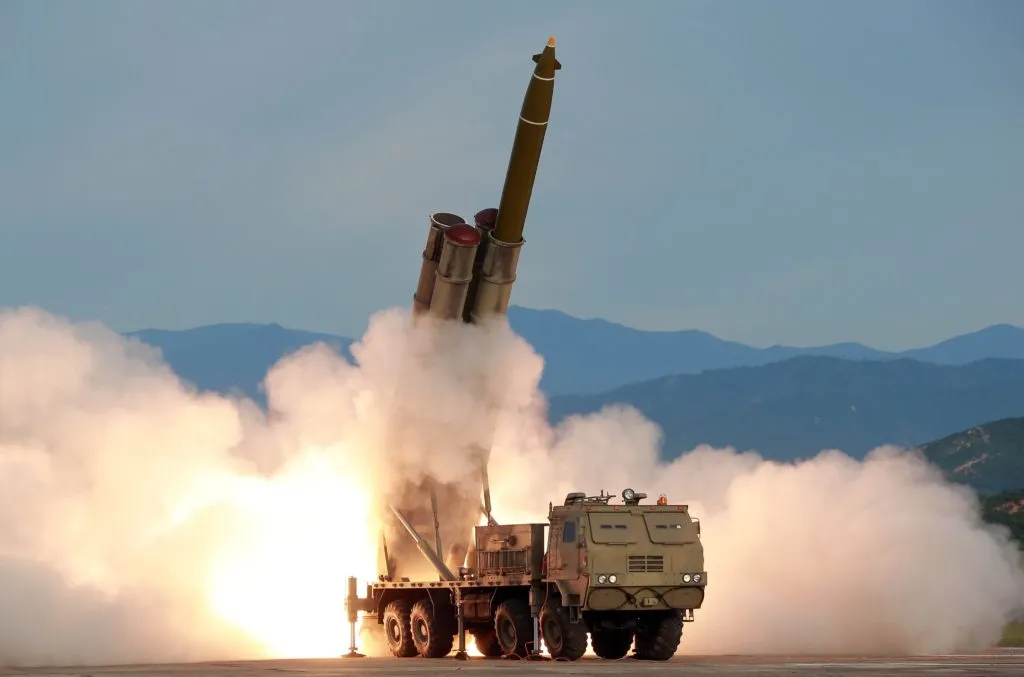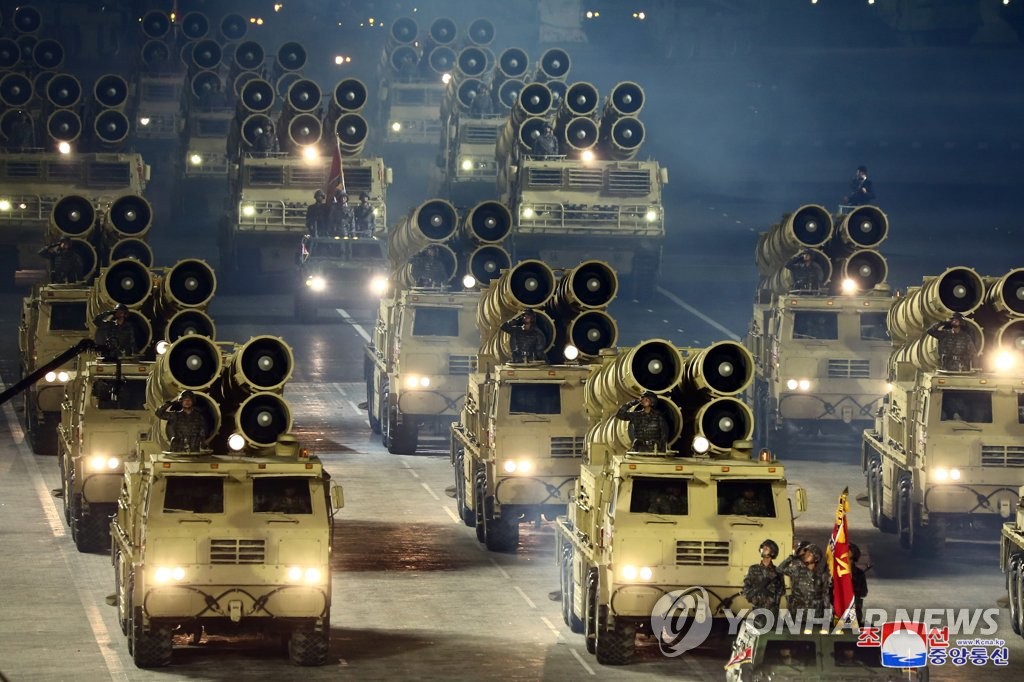North Korea’s KN-25 Rocket System Enters Mass Production: A Tactical Nuclear Threat Disguised as Artillery
Photographs released by North Korean state media recently showed Supreme Leader Kim Jong Un inspecting a sprawling production facility dedicated to the KN-25 system, underscoring the regime’s prioritization of strategic deep-strike assets amidst growing tensions on the Korean Peninsula.
(DEFENCE SECURITY ASIA) – North Korea has begun serial production of its KN-25 “super-large calibre” rocket artillery system, a hybrid strike platform that military analysts increasingly regard as among the most formidable in the world.
Photographs released by North Korean state media recently showed Supreme Leader Kim Jong Un inspecting a sprawling production facility dedicated to the KN-25 system, underscoring the regime’s prioritization of strategic deep-strike assets amidst growing tensions on the Korean Peninsula.
Equipped with 600mm rockets and boasting a strike range of approximately 380 kilometers, the KN-25 blurs the line between conventional multiple launch rocket systems (MLRS) and operational-tactical ballistic missiles, giving Pyongyang a cost-effective precision weapon with strategic reach.
“The deployment of the KN-25 system in large numbers reflects Pyongyang’s strategic intent to strengthen its deep-strike capabilities and directly challenge the effectiveness of South Korea and the United States’ ballistic missile defense systems,” one analyst observed.
Available in both tracked and wheeled variants, the KN-25 platform offers North Korea a high degree of tactical mobility and rapid redeployment capability across diverse terrains, making it particularly suited for shoot-and-scoot operations under hostile surveillance and targeting conditions.
Military experts believe the system was deliberately engineered for operations in rugged terrain, with emphasis on survivability and speed to complicate enemy counter-battery and reconnaissance efforts.
“The sheer size and capability of this weapon—600mm in caliber and approximately 8 meters in length—places it closer to operational-tactical missile systems than conventional MLRS platforms,” one defense analyst explained.

Weighing nearly three tons per rocket, the KN-25 is reportedly the largest artillery rocket of its kind in global inventory, eclipsing even Russia’s Tornado-S and China’s AR-3 in payload and impact.
Originally unveiled in 2019 and initially presented by North Korean media as a “super-large caliber multiple launch rocket system,” the KN-25 has since undergone extensive trials that have progressively refined its accuracy, salvo-firing capability, and operational range.
The system incorporates inertial navigation and potentially satellite-aided guidance, which reportedly allow it to achieve impact precision within a few dozen meters—enabling it to strike critical infrastructure such as airbases, radar arrays, and forward logistics hubs with near-SRBM-level accuracy.
In its most recent operational validation, two KN-25 rockets were launched from North Korea’s eastern coastline into the Sea of Japan, achieving a range of 380 kilometers and peak altitudes close to 100 kilometers, confirming both its range envelope and trajectory shaping capability.
While the currently fielded variants are equipped with high-explosive conventional warheads, Pyongyang announced in 2022 that the KN-25 is fully capable of delivering tactical nuclear payloads, raising concerns of a new class of highly mobile, nuclear-armed battlefield systems.
Multiple indicators suggest that North Korea has already produced the system in significant numbers and has deployed it in both nuclear-capable and conventionally armed configurations, reflecting its importance within the country’s evolving escalation posture.

Western intelligence assessments and independent defense analysts have also speculated that certain variants may be engineered to carry chemical warheads, further expanding the KN-25’s utility in non-conventional warfare scenarios and strategic deterrence.
The U.S. Congressional Research Service has described the KN-25 as a system that “blurs the line between a rocket and a missile,” noting its integration of “advanced avionics, inertial and satellite guidance systems, and aerodynamic structures,” which together provide maneuverability and precision not seen in legacy MLRS platforms.
As questions persist over North Korea’s arms trade with Russia amid the war in Ukraine, speculation has grown over whether the KN-25 has been offered—or exported—to Moscow.
Although there is no conclusive evidence that the KN-25 has been delivered to Russian forces, some defense observers suggest recent missile tests may serve dual purposes: operational validation and a showcase for potential foreign customers, including Russia.
One such event occurred in May 2024, when North Korea launched at least ten short-range ballistic missiles in a salvo, an act interpreted by South Korean defense officials as a deliberate demonstration of firepower for prospective international clients.
Despite growing military cooperation between Pyongyang and Moscow—including confirmed deliveries of artillery shells and KN-23/KN-24 missiles—there remains no verified documentation or imagery to confirm that the KN-25 has been among the systems exported.

Nonetheless, its capabilities have drawn attention for good reason.
Unlike standard MLRS systems that are typically limited by shorter range and unguided munitions, the KN-25 possesses attributes that elevate it to a class of its own.
Key Advantages of the KN-25 System:
🔹 1. Long-Range Strike Envelope Comparable to SRBMs
With a reach of 380 kilometers, the KN-25 can engage strategic targets deep within South Korea without ever crossing the DMZ, including command centers, runways, and logistics depots.
🔹 2. Precision-Guided Munitions
Using inertial and possibly satellite-aided guidance, the KN-25 reportedly achieves high accuracy, making it suitable for surgical strikes on hardened or mobile targets.
🔹 3. High-Impact Warhead Capacity
Its 600mm diameter and 3-ton class projectile size offer significant destructive potential, making it effective against reinforced structures and critical infrastructure.
🔹 4. Salvo Launch Capability
Designed for massed fire operations, the KN-25 can be fired in rapid succession, saturating enemy air defenses such as THAAD and Patriot with overwhelming volume.

🔹 5. WMD Payload Flexibility
The system is believed to support nuclear and potentially chemical payloads, giving it strategic deterrent versatility and asymmetric warfare value.
🔹 6. Rocket-Missile Hybrid Architecture
Combining features of both MLRS and short-range ballistic missiles, the KN-25 is effectively a quasi-missile system with maneuverable reentry potential.
🔹 7. Cost-Effective Strategic Option
Compared to traditional SRBMs, the KN-25 likely costs less to manufacture, making it ideal for mass production and dispersed deployment.
🔹 8. Enhanced Mobility and Survivability
Mounted on tracked and wheeled chassis, the KN-25 is optimized for rapid repositioning and evasive operations, reducing its vulnerability to counterstrikes.
As North Korea doubles down on hybrid strike capabilities and multi-domain deterrence amid tightening alliances in Northeast Asia, the KN-25 may emerge as the backbone of its precision artillery doctrine—and a serious variable in future conflict scenarios across the peninsula.
— DEFENCE SECURITY ASIA


